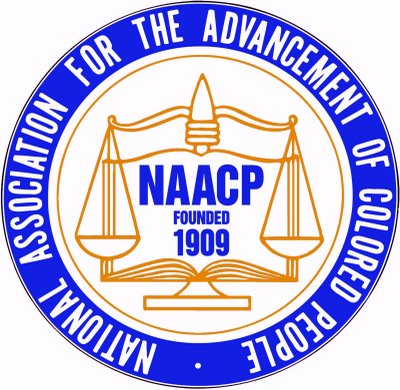Born from the Niagara Movement, led by William E. B. DuBois, the NAACP has had a volatile birth and a lively history (Beifuss 17:E4). The impetus for the creation of the National Association for the Advancement of Colored People came in the summer of 1908.
Severe race riots in Springfield, Illinois, prompted William English Walling to write articles questioning the treatment of the Negro.  Reading the articles, Mary White Ovington and Dr. Henry Moskowitz were compelled to meet with Walling. Consequently, the three along with a group of black and white citizens had considered the present state of the Negro, disfranchised in the South and taxed while going unrepresented in the government, a national conference needed to be held to answer the “Negro Question” (Jenkins). It was then that the idea of NAACP was created.
Reading the articles, Mary White Ovington and Dr. Henry Moskowitz were compelled to meet with Walling. Consequently, the three along with a group of black and white citizens had considered the present state of the Negro, disfranchised in the South and taxed while going unrepresented in the government, a national conference needed to be held to answer the “Negro Question” (Jenkins). It was then that the idea of NAACP was created.
February 12, 1909, Lincoln’s birthday, a conference to review the progress that the nation made since Emancipation Proclamation and to celebrate Lincoln’s birthday took place; Thereupon, a statement, now known as “The Call”, was released. This statement reiterated the treatment of the black race since 1865. Many notable figures in history signed “The Call” , e.g., Ida Wells Barnett, Jane Adams, W.E.B. DuBois and John Dewey. In a matter of two months, another conference was held. As a result of that conference, the NAACP was born.
A distinct factor of the National Association for the Advancement of Colored People, which set it apart from its congruent movement, the Niagara Movement, was involvement of both races. The early success was due in large part to the interracial membership (Franklin 91). A large part of the membership consisted of white socialist and liberals (Franklin). For some time the NAACP was white-led. In time the Association became black dominated; Specifically, under the guidance of James Weldon Johnson. During the rule of Johnson, the NAACP began to form its reputation for using litigation. Although many of the NAACP’s landmark cases did not occur until the 1950’s and 1960’s, the foundation was laid in the 1920’s and 1930’s. In short the National Association for the Advancement of Colored People transformed from a white dominated, infantile organization too the first black led organization, which influenced Congressional legislation under Harding’s administration.
During the next twenty years, the NAACP would be embattled in court cases which changed the face of America. One of the landmark cases that occurred, Brown v. Board was argued by lead attorney Thurgood Marshall (Lang F12). Another case which created opportunities for blacks, was Open Housing Act of 1968. Under this law it became illegal to refuse to sell property solely based on race. Since that time in which the blacks truly gained their civil rights, the NAACP tried to register 3 million voters throughout the South (Jenkins). Indeed the most productive period of National Association for the Advancement of Colored People in the courts was the 1950’s and 1960’s.
As civil rights that the NAACP and leaders fought for, were attained. The involvement of the Association in the courts decreased. However, the NAACP played a key role in persuading the United States to pose economic sanctions against South Africa (Lang F12). In the past decade the NAACP made it presence known during the passage of the Fair Housing Act of 1988 (Lang). Besides these two major examples, NAACP spent most of its time dealing with retirement of Benjamin L. Hooks and finding an adequate replacement. Furthermore, the Association was plagued with internal scorn, lack of leadership and scandals that drove the NAACP into debt. For example, Benjamin Chavis’s wasteful spending and using $324,400 of NAACP funds as hush money in a sexual discrimination suit, cost him his job (Cose 27). Despite the above, a new executive leader was chosen which gives promise to the future of the NAACP. Everly Evers, spouse of the late Medger Evers who was the NAACP’s field secretary during the 1950’s, brought a fresh blood into the NAACP.
